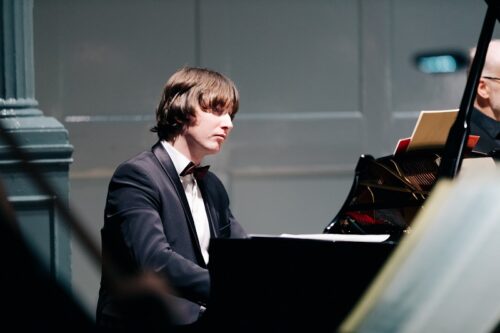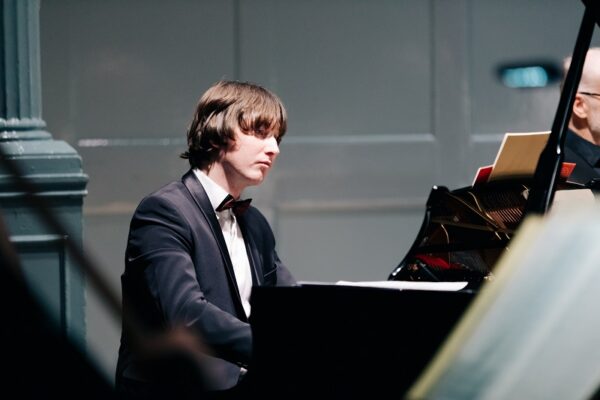 United Kingdom Mozart: Scottish Chamber Orchestra / Maxim Emelyanychev (piano/conductor). Queen’s Hall, Edinburgh 24.3.2022. (SRT)
United Kingdom Mozart: Scottish Chamber Orchestra / Maxim Emelyanychev (piano/conductor). Queen’s Hall, Edinburgh 24.3.2022. (SRT)

Mozart – Serenade No.6, ‘Serenata Notturna’; Piano Concerto No.20 in D minor; Symphony No.39 in E flat
When Maxim Emelyanychev and the Scottish Chamber Orchestra played Mozart’s last three symphonies at the 2021 Proms, the world realised what we in Scotland have known for a long time: they are a world-beating team in this music. Emelyanychev is a galvanising force for the SCO in so many ways, but that Mozart concert was particularly special, so I came into this one with really high expectations, and I wasn’t disappointed.
‘Feel free to have fun!’ Emalyanychev told us before the concert began, and that sense of fun, collective endeavour and shared achievement characterised the whole concert. It is a key part of what Emelyanychev draws out of them. They were helped, however, by a fairly remarkable string sound. As soon as they began the Serenata Notturna my ears pricked up, not just because of the leanness that comes from using gut strings, but because of the vibrant sense of energy that ran through the music. Emelyanychev wasn’t even conducting for this piece, leaving the honours to leader Cecilia Ziano, but there was still drama throughout, and a wonderful sense of give-and-take between the two groups of instrumentalists, from the robust Menuetto to the playful finale which featured several sly winks between the players, sometimes literally!
That sense of drama was writ large over the D minor piano concerto, too, and most of it generated from the piano. In fact, Emelyanychev’s free sense of dynamism motivated it even before Mozart’s music began, because Emelyanychev, directing from the keyboard, prefaced the first movement with an arpeggiated improvisation that led straight into the strings’ opening prowl. Perhaps surprisingly given the context, this was a big-boned reading of the work, clearly one on a modern concert grand rather than a nineteenth-century fortepiano, with richer orchestral sound to match, and even a touch of vibrato in the string sound.
I didn’t recognise Elemyanychev’s cadenzas, doubtless written by himself, but they were like extra characters in the drama, independent voices that couldn’t really have dated from Mozart’s time but which nonetheless pushed the story forwards. The orchestra matched him with tone that positively bristled at the start of the finale, the opening tutti of which was the only time Emelyanychev rose from the piano stool to give his conducting extra edge. I didn’t love their way the with central Romanza, though, which pressed forwards too much for my liking. The central turbulence worked well, but the great beauty of the outer movements passed so quickly that there scarcely seemed any time to enjoy it.
That was a problem in parts of Symphony No.39, too. The finale felt too driven, those string semiquavers beginning to smudge rather than articulating cleanly, and the slow movement felt rather curt, too. Elsewhere, however, Emelyanychev’s approach worked brilliantly. The opening exploded straight out of the trap with flourishing dramatic brilliance, and the main Allegro (first movement) was full of tightly sprung energy. Even the slow movement was full of brilliantly pointed drama, brought out with carefully shaded dynamics and the occasional cheeky tempo tweak. Furthermore, the delicately curling winds of the third movement’s Trio were a complete delight. This was classical refinement with rocket boosters under it.
Simon Thompson
